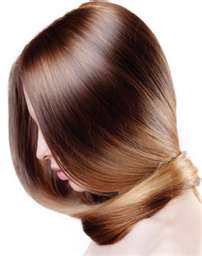It is summer, and that means fun in the sun! And boy have we had a lot of sun this year! Along with all of that great time on the beach and poolside, comes a downfall; damaged hair. We all get damaged hair from everyday wear and products, but adding chlorine and salt water can do a lot more damage than you might think. That is why it is so important to protect your hair to prevent the problem and/or use the right products to help fix the problem. There are several ways to prevent chlorine and salt water damage from becoming the disaster it might be. You need prevention, sustainability, and a solution.
The easiest prevention method is simply a hat. However, I don't look great in hats and some people should really never wear them, so let's look at some different options. Did you ever think of your hair as a sponge? When a dish sponge gets wet, it fills with water until it cannot fit anymore water inside of the sponge, then you have excess water that runs out. Your dry hair is like the dry sponge and it will absorb anything you put on it, even chlorine water. So to prevent this you should always wet your hair with normal tap water before getting into the pool or ocean. This will keep more of the 'bad' water out because it won't 'fit' into the 'sponge'.
Another great option that will work with ANY hair type, is to apply a leave in conditioner to your hair prior to getting into a body of water. ISO Hydra Moisture Creme is a professional leave in conditioner that is great for every hair type. Since it is a professional product it is slightly more concentrated than other products and requires less! Protecting your hair and your budget in one step!
 To maintain your hair's healthy state, even if you don't have damage, it is always a great idea to add a professional conditioning treatment to a handful of your salon services throughout the year. Conditioning treatments are a great way to replenish the moisture levels in your hair, smooth out rough ends, re-balance dryness from chlorine damage, and add body and shine to your hair. A conditioning treatment is also a great follow up service after a clarifying treatment. This type of treatment uses a professional clarifying treatment to wash away the oil, dirt, and product build-up on your hair and scalp.
To maintain your hair's healthy state, even if you don't have damage, it is always a great idea to add a professional conditioning treatment to a handful of your salon services throughout the year. Conditioning treatments are a great way to replenish the moisture levels in your hair, smooth out rough ends, re-balance dryness from chlorine damage, and add body and shine to your hair. A conditioning treatment is also a great follow up service after a clarifying treatment. This type of treatment uses a professional clarifying treatment to wash away the oil, dirt, and product build-up on your hair and scalp.
After your hair has been damaged, there is no overnight cure. Your hair didn't get damaged in a day and it won't be fixed that way either. The only way to completely reverse damage is to grow your hair out again. But don't give up hope! There are plenty of things you can do in the mean time to get the shiny, healthy hair you have always wanted. Talk to your stylist about what she would recommend for your hair and then LISTEN. These people have been trained repeatedly, most of the time, to offer you their professional advice, not their personal opinion. Take their recommendations and incorporate them into your hair regimen. Set a goal with your stylist and then work together to reach that goal. Use conditioning treatments, special shampoos and conditioners, protective sprays, and ease up on the flat ironing, and you will have great looking hair in no time!









